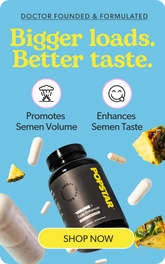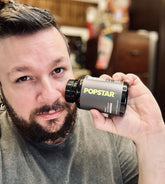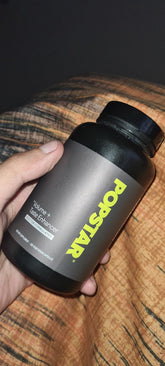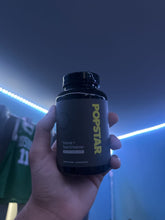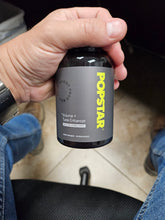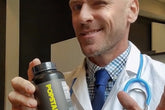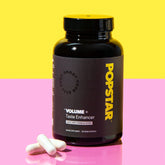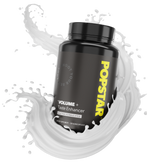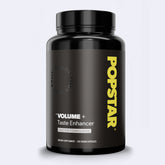The human body’s complexity is never more evident than when exploring the intricacies of the male reproductive system. One pivotal component in this system is the scrotum, a uniquely designed external pouch that houses and protects the testicles. Though it may appear simple at first glance, the scrotum performs critical tasks that influence everything from reproductive potential to hormonal balance. In this extensive guide, you’ll gain a clear understanding of what the scrotum is, why it matters, and how to maintain its health.
Table of Contents
-
What Is the Scrotum?
-
Anatomy of the Scrotum
-
Functions of the Scrotum
-
Common Scrotal Conditions
-
Maintaining Scrotal Health and Hygiene
-
When to Seek Medical Help
-
FAQs About the Scrotum
-
Lifestyle Tips for Better Scrotal Care
-
Final Thoughts
What Is the Scrotum?
The scrotum is a dual-chambered, external pouch that hangs below the penis in the male reproductive system. Each chamber of the scrotum typically contains one testicle (also referred to as a testis), along with parts of the epididymis and spermatic cord. One of its primary purposes is to maintain a temperature slightly lower than the body’s core temperature—an essential factor for healthy spermatogenesis, or sperm production.
Key Takeaways
-
The scrotum is not just “skin,” but an organ composed of several layers of tissue, muscle, and protective membranes.
-
Temperatures within the scrotum usually need to be 1 to 2 degrees Celsius cooler than normal body temperature for optimal sperm development.
-
The scrotum’s temperature-regulation mechanism involves the dartos muscle and the cremaster muscle, which help it contract or relax in response to temperature changes.
Understanding its structure helps demystify why this part of men’s health is so vital. The shape, texture, and flexibility of the scrotum are all designed to ensure the safe housing and efficient function of the testicles.
Anatomy of the Scrotum
Layers and Tissues
A closer look at scrotal anatomy reveals several distinct layers. From the outside in, these layers include:
-
Skin: The outermost layer, typically featuring hair follicles and sweat glands. It can vary in texture and thickness due to temperature changes and age.
-
Dartos Muscle (Tunica Dartos): A thin layer of smooth muscle beneath the skin that wrinkles or relaxes the scrotal skin to regulate temperature.
-
External Spermatic Fascia: A layer of connective tissue surrounding the spermatic cord.
-
Cremaster Muscle and Fascia: Voluntary striated muscle fibers that elevate or lower the testicles, also aiding in temperature control.
-
Internal Spermatic Fascia: Another connective tissue layer that envelops the testicles and the epididymis.
Inside each compartment of the scrotum lies:
-
Testicle (Testis): The oval-shaped gland responsible for sperm production and testosterone secretion.
-
Epididymis: A coiled tube at the back of the testis that stores and transports sperm.
-
Vas Deferens (Ductus Deferens): The duct through which sperm travels during ejaculation.
-
Blood Vessels and Nerves: These include the testicular artery, pampiniform plexus, and genital branch of the genitofemoral nerve.
Significance of Proper Blood Flow
The pampiniform plexus is a network of veins critical for cooling arterial blood before it reaches the testicles. Healthy blood flow:
-
Ensures adequate oxygen and nutrient delivery to the testes.
-
Helps regulate hormonal balance (particularly testosterone).
-
Aids in thermoregulation, ensuring sperm remain viable.
Temperature Control Mechanisms
The scrotum actively adjusts to external conditions. When it’s cold, the dartos and cremaster muscles contract, pulling the testicles closer to the body for warmth. In hot conditions, these muscles relax, allowing the scrotum to hang lower. This regulation is crucial for:
-
Optimal sperm production.
-
Maintaining hormone levels for reproduction and overall male health.
Functions of the Scrotum
-
Protective Role
The scrotum’s most fundamental function is to safeguard the testicles. By encasing them in a pliable, muscular sac, it prevents direct impact and reduces the risk of physical injury. -
Temperature Regulation
As outlined, sperm production requires a cooler environment than core body temperature. The scrotum excels in responding to temperature fluctuations, ensuring consistent testicular health. -
Hormonal Influence
The Leydig cells in the testicles produce testosterone. Adequate scrotal health indirectly supports hormone balance, which affects libido, muscle mass, energy levels, and mood. -
Fertility Maintenance
By facilitating an ideal environment for spermatogenesis, the scrotum plays a pivotal role in male fertility. Without proper temperature regulation, sperm quality and count can drastically diminish. -
Storage and Support
The scrotum provides both storage space for sperm in the epididymis and support for the testicles. The structure reduces compression and damage risk, aiding overall reproductive function.
Common Scrotal Conditions
Men can experience a range of issues related to the scrotum. Some are minor and temporary, while others may require prompt medical intervention.
Testicular Torsion
Testicular torsion occurs when a spermatic cord becomes twisted, cutting off blood flow to the testicle. This is a medical emergency requiring immediate attention. Typical symptoms include:
-
Sudden, severe scrotal pain
-
Swelling and tenderness
-
Nausea and vomiting
-
Abnormal testicle position (higher than usual)
Epididymitis
Often caused by bacterial infections or sexually transmitted infections (STIs), epididymitis is characterized by inflammation of the epididymis. Signs include:
-
Pain and swelling in the scrotum
-
Possible discharge if an STI is present
-
Fever or a sensation of heat in the scrotal area
Hydrocele
A hydrocele is a fluid accumulation in the scrotum, usually painless but sometimes resulting in discomfort due to heaviness. While hydroceles are often benign, they can be a sign of underlying conditions like inflammation or testicular tumors.
Varicocele
Varicoceles are essentially enlarged veins (like varicose veins) within the scrotum. They can impact fertility by increasing intrascrotal temperature, potentially reducing sperm count and quality.
Inguinal Hernia
Though technically occurring in the groin region, inguinal hernias may extend into the scrotum. These arise when intestinal tissue pushes through a weak spot in the abdominal muscles, causing a visible bulge in the scrotum.
Orchitis
Orchitis is an inflammation of the testis itself, frequently related to viral or bacterial infections. Mumps is a common cause when it affects adolescents and adults, leading to testicular swelling, pain, and fever.
Testicular Cancer
While relatively rare compared to other cancers, testicular cancer commonly presents in younger men (ages 15 to 35). Early detection is crucial. Typical signs include:
-
A painless lump or swelling in the testicle
-
Dull ache in the abdomen or groin
-
Sensation of heaviness in the scrotum
Maintaining Scrotal Health and Hygiene
Taking care of the scrotum doesn’t have to be complicated. Incorporate these simple measures to protect your testicular health and overall male reproductive wellness.
-
Regular Self-Exams
Conduct a monthly self-examination to detect lumps or swelling. A self-exam involves gently rolling each testicle between your thumb and forefingers. Look for any irregularities, size changes, or discomfort. -
Proper Hygiene
-
Clean the scrotal area daily using mild soap and warm water.
-
Dry thoroughly to prevent fungal or bacterial growth—a moist environment can lead to skin irritation or infections.
-
Supportive Underwear
Wear a jockstrap or supportive briefs when engaging in strenuous activity or sports. This helps minimize excessive movement and potential impact injuries. -
Temperature Awareness
Avoid consistently exposing the scrotum to high temperatures. Prolonged hot tubs or saunas, for instance, can hamper sperm production. Laptop use on the lap for extended periods may also raise scrotal temperature. -
Healthy Diet and Exercise
A nutrient-rich diet with essential vitamins, minerals, and antioxidants supports testicular function. Regular exercise helps maintain a healthy weight, reducing risks like hormonal imbalance and poor circulation. -
Adequate Hydration
Proper fluid intake boosts overall circulation and tissue health. Staying hydrated can aid in preventing infection and inflammation. -
Safe Sexual Practices
Use protection to lower the risk of STIs, which can lead to conditions like epididymitis or orchitis. Regular STI screenings are also recommended if you have multiple partners or suspect exposure.
When to Seek Medical Help
Early intervention can mitigate complications. Contact a healthcare professional or urologist if you experience:
-
Persistent scrotal pain or discomfort
-
Sudden, intense pain
-
Unusual lumps or swellings
-
Any changes in the size or shape of the testicles
-
Signs of infection (redness, discharge, fever, chills)
-
A persistent heavy sensation in the scrotum
Never ignore testicular or scrotal pain—it can indicate severe conditions like torsion or infection that require urgent treatment.
FAQs About the Scrotum
In this Q&A section, we’ll address frequently asked questions (FAQs) that help clarify common concerns. The headings are purposefully phrased as questions, aligning with LSI keywords and NLP-friendly structures for improved visibility on search engines.
1. What Causes Pain in the Scrotum?
Scrotal pain can stem from various sources:
-
Infections (e.g., epididymitis, orchitis)
-
Trauma or injury (sports-related or accidental)
-
Testicular torsion, a medical emergency
-
Hernias that extend into the scrotum
-
Varicocele or hydrocele, leading to swelling or pressure
If you notice persistent or severe pain, consult a healthcare professional immediately.
2. How Can I Tell if My Scrotum Is Healthy?
A healthy scrotum typically:
-
Feels smooth without noticeable lumps (besides the epididymis on the top/back of each testicle)
-
Maintains average size, though some asymmetry between testicles is normal
-
Feels comfortable most of the time, with pain or swelling being an exception
Monthly self-exams and awareness of changes in size, shape, or texture are key. If something feels off, visit a urologist for evaluation.
3. Is It Normal for One Testicle to Hang Lower?
Yes, it’s common for one testicle to hang slightly lower than the other. Typically, the left testicle sits lower in most men. This asymmetry is a normal anatomical variance and not usually a cause for concern unless accompanied by pain or sudden swelling.
4. What Are the Best Ways to Clean the Scrotum?
-
Use gentle, unscented soap and warm water.
-
Wash thoroughly but gently to avoid skin irritation.
-
Pat the area dry to reduce fungal or bacterial growth.
Ensuring that the area is clean and dry helps prevent rashes, jock itch, and other skin-related problems.
5. Can Tight Underwear Harm My Scrotum?
Tight underwear can increase scrotal temperature, potentially affecting sperm production over time. While occasional use is fine, consider looser, breathable fabrics (like cotton) for daily wear. During activities like running or sports, you may prefer supportive briefs or an athletic cup for protection against injuries.
6. How Does Age Affect the Scrotum?
With age, the scrotum may:
-
Experience loss of elasticity, causing it to sag more.
-
Show wrinkles or changes in skin texture.
-
Potentially face an increased risk of certain conditions like hernias or testicular lumps.
Regular check-ups and self-exams become increasingly important as you age, ensuring early detection of abnormalities.
7. Does the Scrotum Impact Fertility?
Yes, the scrotum plays a crucial role in male fertility by regulating the temperature essential for sperm viability. Chronic exposure to high temperatures, varicoceles, or infections in the scrotum can decrease sperm count and quality, affecting fertility.
8. What Causes Lumps in the Scrotum?
Possible causes include:
-
Cysts (e.g., spermatocele)
-
Tumors (cancerous or non-cancerous)
-
Inflammation of the epididymis or testicles
-
Varicocele, appearing as a “bag of worms” sensation
Always consult a medical professional for an accurate diagnosis if you discover a lump.
9. How Do I Perform a Testicular Self-Exam?
-
Perform the exam after a warm shower when scrotal skin is relaxed.
-
Gently roll each testicle between your thumb and forefingers.
-
Feel for hard lumps, unusual swelling, or changes in texture.
-
Note any discomfort or difference from previous exams.
If you detect something suspicious, schedule a medical appointment promptly.
10. Can Scrotal Skin Develop Rashes or Infections?
Yes, scrotal skin can be prone to:
-
Fungal infections like jock itch
-
Bacterial infections from poor hygiene or sweating
-
Dermatitis due to allergic reactions
Keeping the area clean and dry, wearing breathable fabrics, and using medicated powders (if recommended by a healthcare provider) can help minimize irritation.
11. Why Is My Scrotum Sometimes Itchy?
Itchiness may result from:
-
Sweating and friction
-
Fungal or yeast infections
-
Contact dermatitis (reaction to soaps, detergents, or fabrics)
-
Dry skin conditions
Persistent itching could indicate a more serious issue—if it doesn’t improve with basic hygiene practices, consider consulting a healthcare provider.
12. Is It Safe to Shave or Wax the Scrotal Area?
Grooming choices are personal, but using safe techniques is crucial. If shaving, use:
-
Sharp, clean razors
-
Lubricating gel or shaving cream
-
Gentle strokes to avoid cuts and irritation
Waxing can be more painful and may increase the risk of ingrown hairs and infections if not done professionally.
13. What Symptoms Accompany Testicular Torsion?
Symptoms often include:
-
Sudden, severe scrotal pain
-
Swelling and tenderness
-
Elevated position of the testicle
-
Nausea and even vomiting
Testicular torsion requires immediate medical intervention to save the affected testicle.
14. How Do External Factors Affect Scrotal Temperature?
-
Hot baths, saunas: Increase local temperature, potentially reducing sperm production if exposure is frequent and prolonged.
-
Laptop use on your lap: Similarly increases temperature around the scrotum.
-
Seasonal changes: Warmer climates or summers may keep scrotal temperature on the higher side.
Moderate exposure is usually harmless, but chronic heat exposure can have a detrimental effect on fertility.
15. What Role Does Testosterone Play in Scrotal Health?
Testosterone is primarily produced in the testicles. The scrotum supports normal testicular function by creating an environment conducive to hormone synthesis. Adequate blood flow and temperature regulation ensure these hormone-producing cells remain healthy and functional.
Lifestyle Tips for Better Scrotal Care
While routine hygiene and self-checks are foundational, broader lifestyle habits can also support robust scrotal health.
-
Maintain a Healthy Weight
Excess weight can lead to insulin resistance and hormonal imbalances, negatively impacting testicular function. Aim for a balanced diet rich in whole grains, fruits, vegetables, and lean proteins. -
Stay Physically Active
Cardiovascular exercise, resistance training, and regular movement support circulation and healthy hormone levels. Avoid prolonged sitting whenever possible—consider breaks to stand or walk, which helps blood flow to the groin area. -
Manage Stress Effectively
Chronic stress can raise cortisol levels, which in turn can affect testosterone. Incorporate stress management techniques like meditation, yoga, or deep breathing exercises to maintain hormonal balance. -
Limit Exposure to Toxins
Excessive alcohol consumption, smoking, and environmental toxins can impair sperm production and hormone function. If you smoke or drink heavily, reducing or stopping can significantly benefit your scrotal and overall health. -
Regular Health Screenings
Annual or biannual check-ups with a primary care provider or urologist can catch potential problems early. Screenings for STIs, prostate health, and overall fertility status are especially important in high-risk populations or those planning for fatherhood. -
Invest in Quality Undergarments
Breathable, supportive underwear or athletic gear can make a huge difference. Cotton or other moisture-wicking materials help reduce excess humidity and friction. -
Balance Heat Exposure
While occasional hot tubs or saunas may not harm fertility significantly, regular or prolonged exposure can elevate scrotal temperatures. Use moderation and consider wearing loose-fitting garments whenever possible. -
Watch for Hormonal Imbalances
Symptoms like low libido, fatigue, erectile dysfunction, or reduced muscle mass could be signs of low testosterone. See a healthcare professional for hormone testing if you suspect an imbalance.
Final Thoughts
The scrotum might be one of the most underappreciated components of men’s health, but its role in reproduction, hormone regulation, and overall wellness is paramount. From temperature control to injury prevention, this external pouch is integral to male physiology. Knowing how to care for it—through diligent hygiene, supportive undergarments, and self-exams—lays the foundation for a healthy reproductive life and potentially better fertility outcomes.
Remember, this comprehensive article is intended for informational purposes only and does not replace professional medical advice. If you observe unusual symptoms—like persistent pain, lumps, or swelling—seeking prompt medical evaluation is essential. By staying informed and proactive, you contribute not just to the well-being of your scrotum, but to your overall male reproductive health and vitality.






